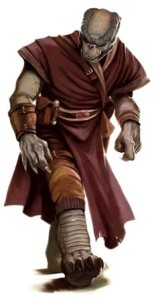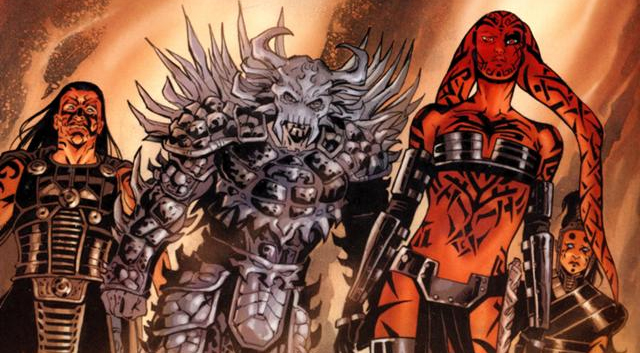How will we fill the roles of assassins and hit men in the new Star Wars movies? Mandalorians, Imperial Intelligence agents, and other unsavory elements have their place, but perhaps we might try something entirely different. The EU has one answer- the Noghri. Silent and stealthy, hidden thoroughly away from the rest of the galaxy, and astoundingly effective, they remain a mystery throughout much of their first appearance and bring a fascinating backstory. The Noghri are an excellent plot hook to tie together old and new Star Wars, bringing back the shadow of the Empire in a galaxy recovering from war.
We first meet the Noghri when one of them, guarding Grand Admiral Thrawn, scares Pellaeon from the shadows. They are silent, stealthy assassins, described as looking rather unnerving and speaking in a gravelly voice. All we know of their history is that they had worked for Darth Vader and are now Thrawn’s personal bodyguards, quickly tasked with capturing Leia Organa Solo and delivering her to the Empire alive. Her befriending them gives us insight into what little we know about the Clone Wars at the time of Dark Force Rising, and their devastated homeworld goes from a potential sign of Imperial benevolence to a somber reminder of the might of the Empire. The Noghri will likely never be able to clean up their poisoned homeworld, and they instead join with “Lady Vader” as her faithful bodyguards. They remain in the position throughout the rest of the EU, with various Noghri watching over Leia and Han and their children. Though they are not free from controversy- they are, after all, the former personal assassins of Darth Vader- they are endlessly useful to the Solo family. Read More




